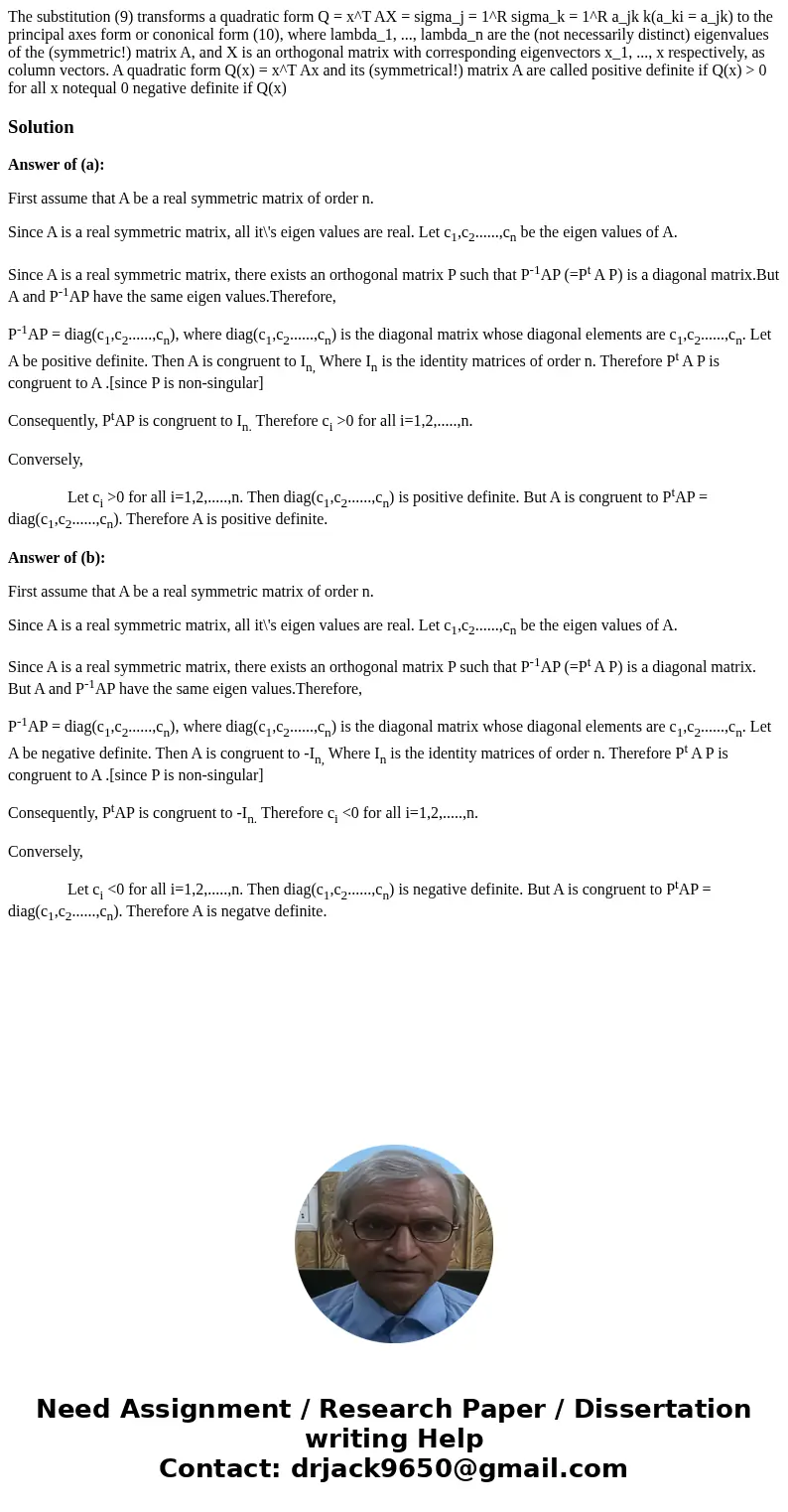The substitution 9 transforms a quadratic form Q xT AX sig
Solution
Answer of (a):
First assume that A be a real symmetric matrix of order n.
Since A is a real symmetric matrix, all it\'s eigen values are real. Let c1,c2......,cn be the eigen values of A.
Since A is a real symmetric matrix, there exists an orthogonal matrix P such that P-1AP (=Pt A P) is a diagonal matrix.But A and P-1AP have the same eigen values.Therefore,
P-1AP = diag(c1,c2......,cn), where diag(c1,c2......,cn) is the diagonal matrix whose diagonal elements are c1,c2......,cn. Let A be positive definite. Then A is congruent to In, Where In is the identity matrices of order n. Therefore Pt A P is congruent to A .[since P is non-singular]
Consequently, PtAP is congruent to In. Therefore ci >0 for all i=1,2,.....,n.
Conversely,
Let ci >0 for all i=1,2,.....,n. Then diag(c1,c2......,cn) is positive definite. But A is congruent to PtAP = diag(c1,c2......,cn). Therefore A is positive definite.
Answer of (b):
First assume that A be a real symmetric matrix of order n.
Since A is a real symmetric matrix, all it\'s eigen values are real. Let c1,c2......,cn be the eigen values of A.
Since A is a real symmetric matrix, there exists an orthogonal matrix P such that P-1AP (=Pt A P) is a diagonal matrix. But A and P-1AP have the same eigen values.Therefore,
P-1AP = diag(c1,c2......,cn), where diag(c1,c2......,cn) is the diagonal matrix whose diagonal elements are c1,c2......,cn. Let A be negative definite. Then A is congruent to -In, Where In is the identity matrices of order n. Therefore Pt A P is congruent to A .[since P is non-singular]
Consequently, PtAP is congruent to -In. Therefore ci <0 for all i=1,2,.....,n.
Conversely,
Let ci <0 for all i=1,2,.....,n. Then diag(c1,c2......,cn) is negative definite. But A is congruent to PtAP = diag(c1,c2......,cn). Therefore A is negatve definite.

 Homework Sourse
Homework Sourse